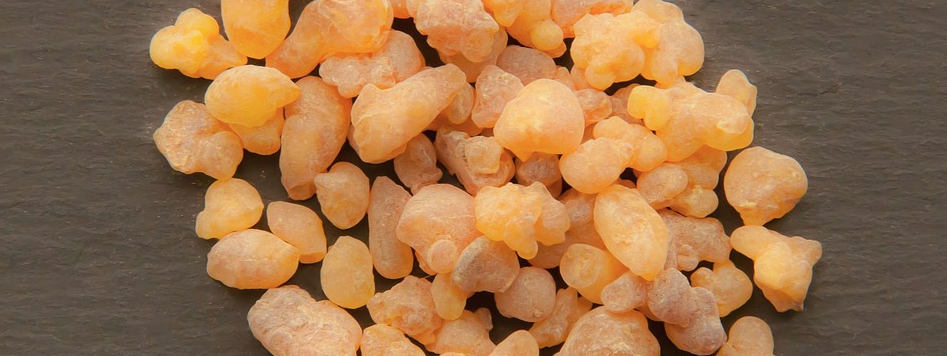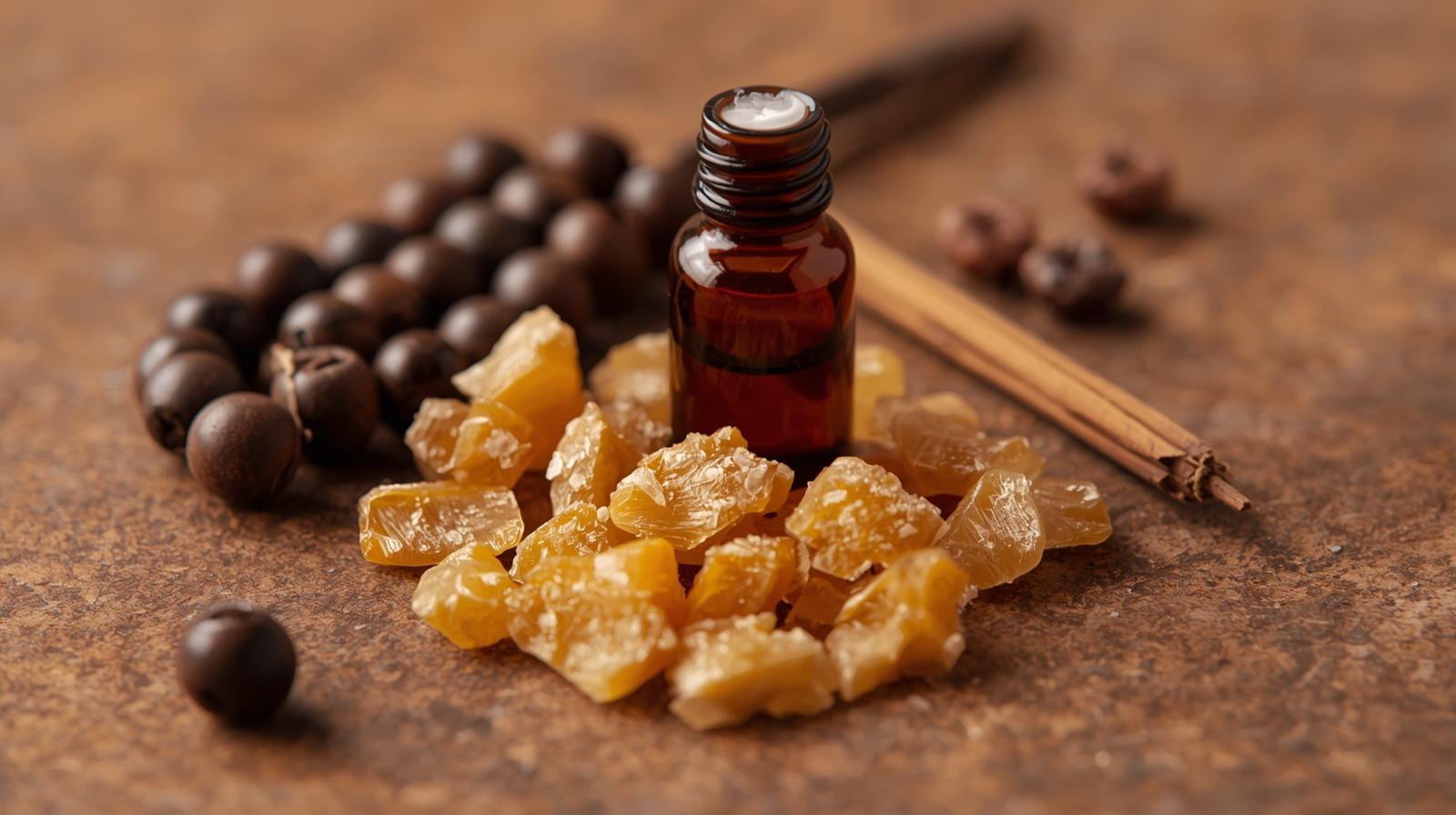Resin and Essential Oils both have ancient healing benefits

Frankincense Essential Oil: History, Benefits & Uses
Frankincense, also known as Olibanum, comes from the sap of the Boswellia sacra tree, native to regions of Africa, Somalia, and Ethiopia. This small, desert-like tree with thorny branches produces a resin that has been valued for thousands of years. The essential oil is distilled from the resin, releasing a warm, earthy, and slightly spicy aroma that has long been used for meditation, healing, and sacred rituals.
A Brief History of Frankincense
The use of Frankincense resin and oil dates back thousands of years. Historical records show it was given as a gift at the birth of Christ, offered by the Queen of Sheba to King Solomon, and burned in Egyptian temples to honor Horus and Ra.
In ancient times, incense resins like Frankincense and Myrrh were so valuable they fueled entire trade routes—at one point even considered more precious than gold. Only kings held the rights to harvest these sacred trees, charging merchants steep fees to collect and sell the resin. Above all, Frankincense was used as a sacred offering to the gods.
Medicinal Uses
Traditional & Medicinal Uses
Throughout history, nearly every part of the Boswellia tree—resin, bark, buds, flowers, fruit, and essential oil—was used in traditional medicine:
- Bark: powdered into ointments for swelling or brewed into teas for digestive issues.
- Resin: chewed to heal gum infections, soothe tooth pain, and used to refresh tired eyes.
- Aromatherapy: burned to deter insects and promote focus during meditation.
- Memory: believed to enhance concentration and mental clarity.
- Perfume: its rich fragrance made it one of the earliest natural perfumes.
Modern Benefits of Frankincense Essential Oil
Today, Frankincense essential oil remains one of the most valued natural remedies and aromatherapy oils. It’s known for its ability to calm the mind, support immunity, and improve skin health.
1. For the Immune & Respiratory System
-
Acts as an immune stimulant and natural expectorant.
-
Helps relieve asthma, coughs, colds, bronchitis, and chest infections.
-
Supports clear breathing and overall respiratory health.
2. For the Skin
Frankincense is widely used in natural skincare for its anti-inflammatory, antiseptic, and astringent properties:
-
Promotes wound healing.
-
Helps fade scars, blemishes, and dark spots.
-
Reduces redness, irritation, and skin inflammation.
-
Often recommended for firming and rejuvenating aging skin.
3. For Stress, Anxiety & Emotional Balance
-
Calms the nervous system.
-
Reduces stress, anxiety, and mild depression.
-
Supports meditation and relaxation practices.
4. For Women’s Health
Historically, Frankincense resin and oil have been used to relieve menstrual discomfort, irregular cycles, and cystitis.
My Experience with Frankincense Resin & Oil
I’ve used both the essential oil and resin in different ways. The essential oil is easy to blend into home remedies—I often add it to my facial oil blend for extra skin support.
The resin, while harder to use in blends, is inexpensive and excellent for burning. A friend of mine places a piece of resin on a small sheet of foil on her wood stove; as it melts, the fragrance naturally scents her home.
Resins come in various colors, from clear amber to dusty brown, each with a slightly different aroma.
Tip: If you see a bar of “Frankincense soap” selling cheaply, it likely contains only synthetic fragrance. True Frankincense essential oil is rare and expensive—soap made with it can cost upwards of $30 per bar.
Final Thoughts
From ancient temples to modern skincare, Frankincense essential oil remains one of the most versatile natural remedies in the world. Whether you burn the resin for meditation, add the oil to your skincare routine, or use it for respiratory support, Frankincense offers a beautiful connection to tradition, wellness, and nature.
© 2017 – 2025, Tes. All rights reserved.
